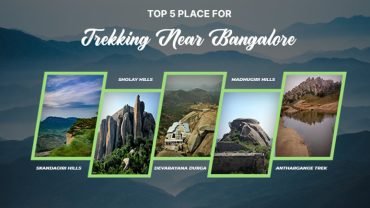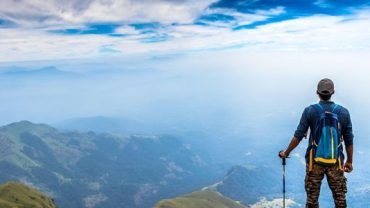Nestled in the Western Ghats of Kerala, Wayanad is a picturesque district blessed with lush greenery, mist-clad mountains, and serene backwaters. Known for its rich biodiversity and cultural heritage, Wayanad offers a perfect blend of natural beauty and adventurous activities, making it an ideal destination for travelers seeking tranquility and exploration. Whether you’re planning a short getaway or a longer vacation, this comprehensive guide will help you navigate through the essentials of planning a memorable trip to Wayanad.
Why Choose Wayanad Trip?
Wayanad beckons travelers with its unspoiled landscapes and diverse attractions:
- Natural Beauty: Explore dense forests, sparkling waterfalls like Meenmutty and Soochipara, and serene lakes such as Pookode Lake.
- Wildlife Sanctuaries: Encounter elephants, tigers, and exotic bird species in Wayanad Wildlife Sanctuary and Tholpetty Wildlife Sanctuary.
- Cultural Heritage: Visit ancient temples, historical caves, and indigenous tribal villages to delve into Wayanad’s rich cultural tapestry.
Best Time to Visit Wayanad
The climate in Wayanad is pleasant throughout the year, but the best time to visit depends on your preferences:
- Winter (October to February): Ideal for outdoor activities and sightseeing with cool temperatures and clear skies.
- Summer (March to May): Suitable for exploring wildlife sanctuaries and trekking trails, although daytime temperatures can be warm.
- Monsoon (June to September): Perfect for experiencing Wayanad’s lush greenery and waterfalls at their peak, although heavy rainfall may limit outdoor activities.
Planning Your Wayanad Itinerary
1. Duration of Stay
Depending on your interests and availability, plan a stay ranging from 2 to 5 days to explore Wayanad thoroughly.
2. Must-Visit Places in Wayanad
- Edakkal Caves: Explore ancient petroglyphs and breathtaking views from atop Ambukuthi Hills.
- Wayanad Wildlife Sanctuary: Embark on a jungle safari to spot elephants, deer, and elusive big cats.
- Banasura Sagar Dam: Enjoy boating amidst the scenic backdrop of the largest earthen dam in India.
- Chembra Peak: Trek to Kerala’s highest peak for panoramic views of Wayanad’s misty landscapes.
3. Accommodation Options
- Resorts: Luxurious resorts amidst nature offering amenities like spas, outdoor activities, and guided tours.
- Homestays: Experience local hospitality and authentic cuisine by staying with Wayanad’s welcoming families.
- Hotels: Choose from budget-friendly to upscale hotels in towns like Kalpetta and Vythiri.
4. Transportation
- Self-Drive: Rent a car or bike to explore Wayanad at your own pace, enjoying scenic drives through tea estates and forests.
- Public Transport: Use local buses or hire taxis for convenient travel between attractions, especially if you prefer not to drive.
Essential Activities and Experiences
1. Trekking and Nature Trails
Wayanad’s diverse terrain offers numerous trekking trails suited for all levels of expertise:
- Chembra Peak Trek: A challenging yet rewarding trek to Kerala’s highest peak, famous for its heart-shaped lake.
- Neelimala Viewpoint Trek: Hike through tea estates to reach a viewpoint offering stunning vistas of Meenmutty Waterfalls.
2. Wildlife Encounters
- Jungle Safari: Embark on a guided safari in Wayanad Wildlife Sanctuary or Tholpetty Wildlife Sanctuary for a chance to spot exotic wildlife including elephants, leopards, and bird species.
3. Cultural Immersion
- Visit Tribal Villages: Interact with indigenous tribes like the Paniyas and Kurichiyas to learn about their traditions, art forms, and way of life.
- Historical Sites: Explore ancient temples like Thirunelli Temple and historical landmarks like Pazhassi Raja Tomb.
4. Waterfalls and Lakes
- Soochipara Waterfalls: Trek to this three-tiered waterfall for a refreshing dip in its natural pools amidst lush greenery.
- Pookode Lake: Enjoy boating amidst serene surroundings or explore the nearby wildlife sanctuary and shopping at the handicrafts emporium.
Safety Tips for Wayanad Trip
- Weather Awareness: Stay informed about weather forecasts, especially during monsoon season, to avoid trekking or outdoor activities during heavy rainfall.
- Wildlife Caution: Respect wildlife sanctuaries and maintain a safe distance from animals encountered during safaris or nature trails.
- Health Precautions: Carry necessary medications, stay hydrated, and be aware of any health advisories related to diseases like malaria in certain areas.
Packing Essentials for Wayanad Trip
- Clothing: Pack light, breathable clothes suitable for Wayanad’s tropical climate, along with a jacket or shawl for cooler evenings.
- Footwear: Comfortable walking shoes or hiking boots for trekking and exploring uneven terrain.
- Personal Care: Sunscreen, insect repellent, basic first aid kit, and any prescription medications.
- Electronics: Camera or smartphone for capturing scenic landscapes, along with chargers and power banks.
Also Read: Long Weekend Special Wayanad Exploration | Wayanad Exploration Tour
Responsible Travel in Wayanad
- Environmental Conservation: Practice responsible tourism by avoiding littering, respecting local customs, and supporting eco-friendly accommodations and activities.
- Cultural Sensitivity: Learn about local customs and traditions to interact respectfully with Wayanad’s diverse communities.
Conclusion
A trip to Wayanad promises a harmonious blend of natural beauty, cultural richness, and thrilling adventures amidst Kerala’s Western Ghats. Whether you’re trekking through mist-clad mountains, encountering exotic wildlife, or immersing yourself in local traditions, Wayanad offers an unforgettable journey for every traveler. By planning ahead, staying informed, and embracing responsible travel practices, you can ensure a safe and enriching experience that leaves you with cherished memories of Wayanad’s timeless allure.
Prepare your itinerary, pack your essentials, and embark on a journey to Wayanad—an oasis of tranquility and exploration awaiting your discovery amidst Kerala’s verdant landscapes and vibrant culture.




Comment (0)